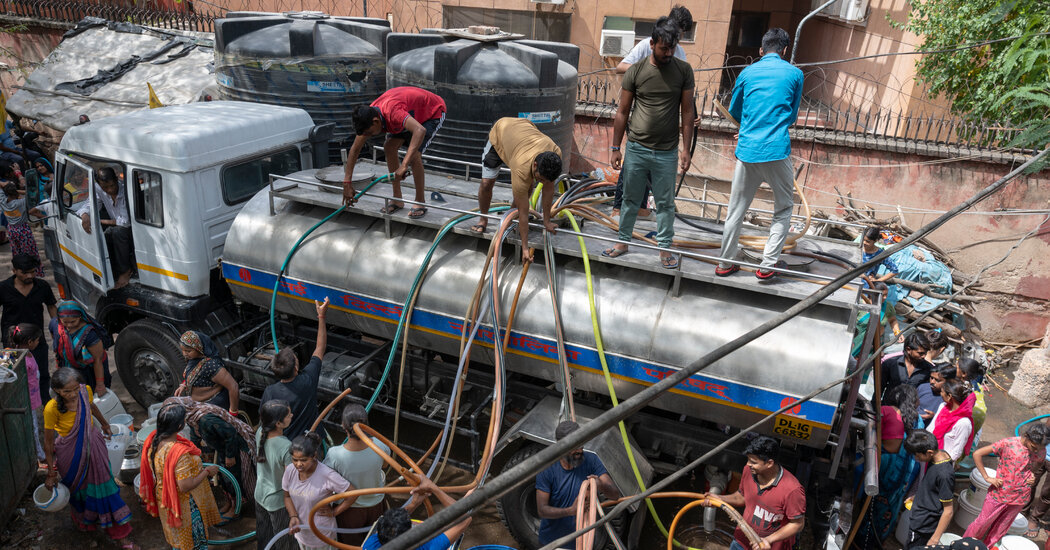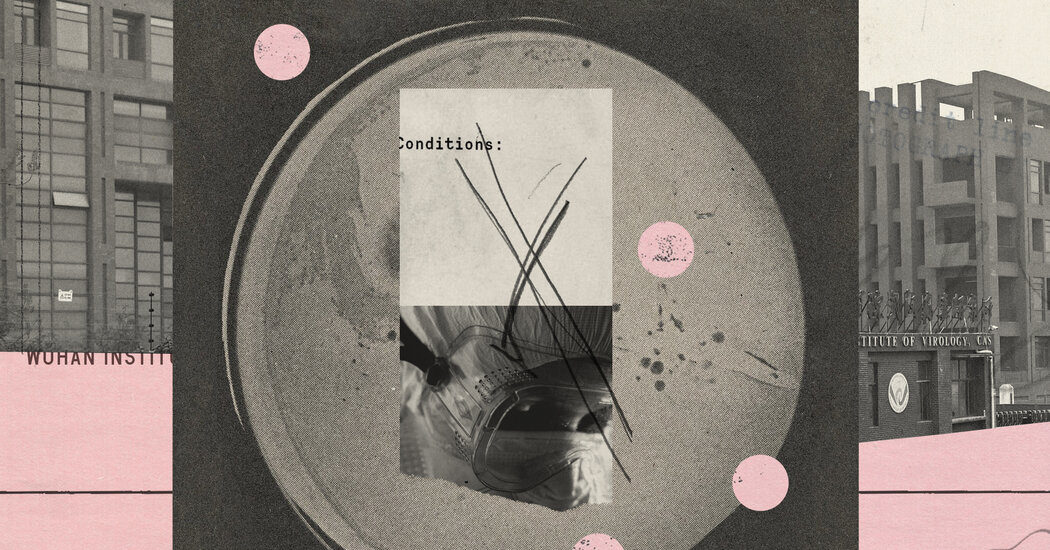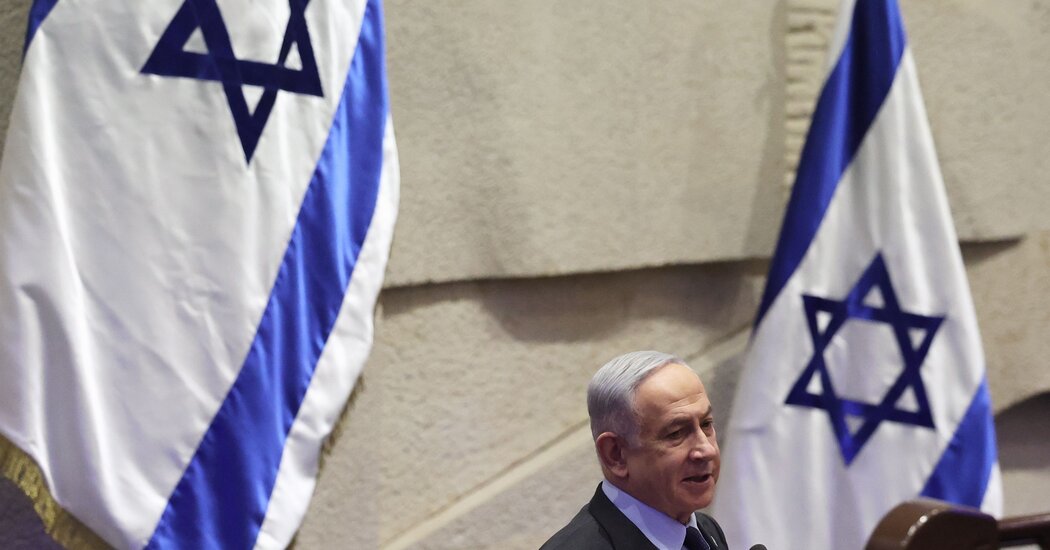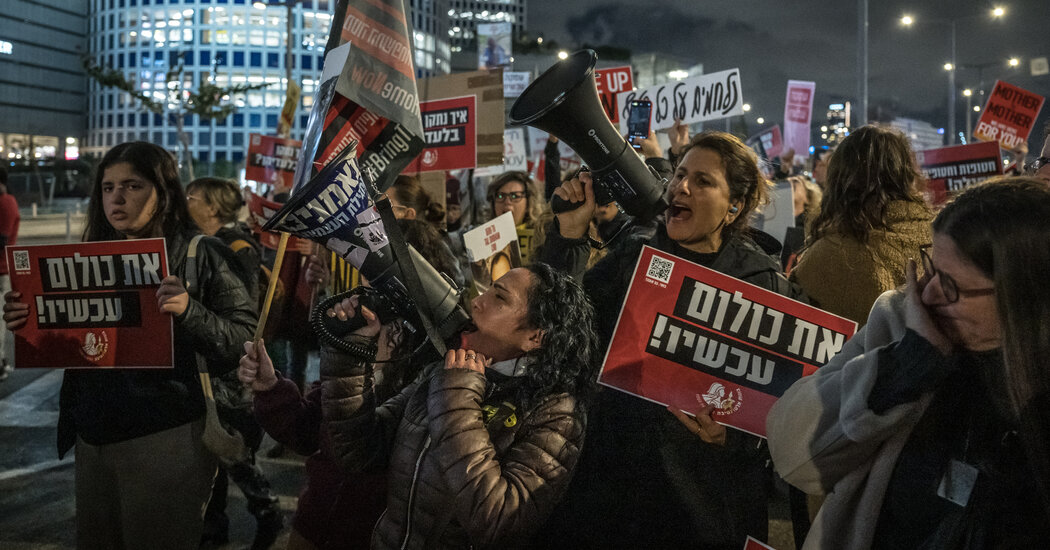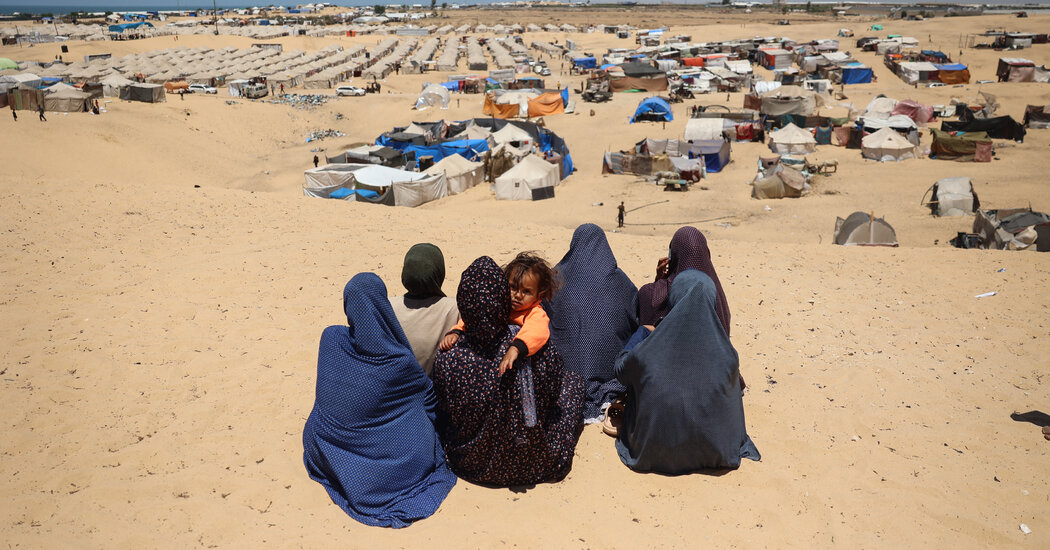Earlier than the water tanker rolled into certainly one of New Delhi’s largest slums, Arvind Kumar was pacing between the gate of a public college and a tea vendor’s stall a whole lot of yards from his dwelling, the place he lives with 9 members of his household.
“There, it’s coming,” Mr. Kumar shouted to a girl ready on the slum’s edge. It had been days since their small portion of the slum, which generally receives one water tanker about each two weeks, had gotten water. With their final saved drops now spent, the 2 neighbors had determined to ensure the truck reached its vacation spot as a heat wave sears town.
The lady boarded the 5,000-gallon tanker and guided its driver via a decent lane, previous homes lined with 1000’s of jerrycans, many chained in place, and onto a stony plateau.
“Typically, you’ll want to kidnap the motive force,” Mr. Kumar, a salesman, mentioned with a smile, “or you will notice your kids dying of thirst on this killing warmth.”
Over the previous few days, temperatures in components of northern India have hovered nicely above 110 levels Fahrenheit, or greater than 43 levels Celsius. Greater than 60 people, together with a number of working or taking part within the country’s general election, whose outcomes shall be introduced on Tuesday, have died, in accordance with information media stories.
In Delhi, the streets really feel like an oven. Work output and mobility have been lowered. Parks normally crammed with joggers are thinly populated. Outdoors the gardens of Humayun’s Tomb, lemonade sellers complained of a drop in enterprise.
“I’ve been ingesting extra glasses of water myself than promoting them,” mentioned one vendor, Sham Yadav.
With the extreme warmth, water — piped or trucked to residents — is now briefly provide for some 25 million individuals within the Delhi nationwide capital area.
Each summer time, the water desk in Delhi is lowered due to the large demand. However this 12 months’s disaster has additionally uncovered the growing dysfunction of India’s nationwide governance, with states usually caught in political battles with each other or with the central authorities. The Delhi regional authorities has appealed to the nation’s high courtroom to pressure a neighboring state to launch surplus water {that a} second state had supplied for Delhi.
As officers have been pressured to ration water throughout the capital area, the disaster has hit practically everybody, no matter standing. However the challenges are notably extreme for the poor.
The slum the place Mr. Kumar lives, Kusumpur Pahari, has no piped water connections. The federal government defines the slum as an unlawful settlement of migrant employees, although individuals have lived there for 3 generations. It’s a maze of slender streets and shanties surrounded on one aspect by glittering purchasing malls and on the opposite by upscale residential enclaves.
Inside its partitions are greater than 50,000 individuals. Many work as cleansing employees for close by embassies, drivers for diplomats, maids for the wealthy. Their lives are punctuated by the horn of the water tanker.
All day lengthy, the slum’s residents wrestle to fill their jerrycans with water for ingesting, washing garments and bathing.
“It’s worse this summer time,” mentioned Monika Singh, 23, a political science graduate, who was born in Kusumpur Pahari and mentioned she would maybe “die right here.”
All through her life, earlier than breakfast, earlier than making ready for sophistication, earlier than selecting what to put on, she has anxious about how and the place to retailer water. “Slowly, because the inhabitants will increase, the struggle over water has develop into worse,” she mentioned. “This 12 months, it’s actually, actually unhealthy.”
For many years, individuals in Kusumpur Pahari and different slums have fought over drops of water pouring from the water tankers. This summer time is not any totally different; a video of residents operating after, leaping onto and crowding round a water tanker in a slum close to the U.S. Embassy unfold broadly on Indian social media.
“Folks can kill you for water right here, for those who don’t hearken to them,” mentioned Surinder Singh, the motive force of the water tanker that Mr. Kumar and his neighbor waited for over the weekend in Kusumpur Pahari.
When one other truck approached to make the second of the 2 water deliveries that one portion of the slum receives every day, women and men crowded round it, forcing the motive force to cease.
“In case you come shut, I’ll slit your throat,” a broad-shouldered lady named Neetu shouted towards three ladies attempting to grab a water hose from her hand.
“Give me first,” cried a housewife, Geeta, who pushed Neetu to the bottom.
“You have got a grown-up household; my two kids haven’t had a shower for days,” one other lady, Sarita, mentioned whereas snatching the hose from Geeta.
“In case you don’t give it to me,” she continued, “I’ll break this bucket in your head, then you definitely received’t be capable of fill your bucket.”
Source link
